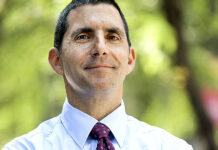By Chris Hall.
Balancing man and machine will be the critical success factor for buy-side trading desks, delegates were told in Thursday’s head trader keynote panel, with coding languages such as ‘Python’ becoming a key skills.
The growing electronification of fixed income markets is increasing the role of data analytics in the trading process, requiring asset managers and owners to invest in new skills and technologies, both on the trading desk and across the investment process. Buy-side firms should make every effort to retain traditional relationship-based fixed income trading skills, senior traders said. But they should prepare for a future in which trading is both more data-driven and multi-asset in scope.
“Trading desks need to embrace change,” said Jatin Vara, head of international trading and global head of emerging markets trading at BlackRock. “I strongly believe that multi-asset traders deploying their skillset across a complex market can make a huge difference.”
Traders must take an increasingly pro-active approach, both to supporting their portfolio managers and developing their own skillsets, panellists agreed.
“The old-style reactive desk has long since died out,” said Darren Moore, head of investment grade, high yield and emerging market credit trading at Legal & General Investment Management. “Traders need to be proactive and increase their knowledge in this fragmented market. They need to be preemptive, going to the PM with a solution before the problem arises.”

Preparations for a more data-driven trading desk is taking many forms. “Python is the new Excel,” said Oscar Kenessey, head of fixed income, derivatives and currency trading at NN Investment Partners. “A 57-year trader on our desk who has never programmed in his life declared recently: ‘I’m going to learn Python: who’s going to join me?’”.
Voice-broking skills will still be needed in the less-liquid markets in the medium term, Kenessey said. “But, in ten years’ time, my way of working is going to be obsolete. I need to help my traders to ensure their skillsets are still relevant in ten years’ time.”
Panellists said the acquisition and analysis of data is now taking up an increasing amount of their budgets. Kenessey asserted that buy-side firms need to develop their own proprietary platforms for capturing and integrating for third-party providers, in order to leverage data effectively and contribute to the investment process. “You will fall behind if you wait for someone to put it on a silver plate for you,” he said. “There is no way round doing this yourself.”
Fabien Oreve, global head of trading at Candriam Investors Group, said that trading desks required a blend of experience and skills to optimise new data resources, but also emphasised the growing need for flexibility across asset classes, as demanded by an increase in global investment strategies.
Oreve said that all fixed-income traders were “gradually becoming multi-asset traders” due to the FX and derivatives exposures inherent in global strategies, which required investment in both skills and technology.
“Trading desks need an order management system that can access key platforms in full straight-through-processing environment to keep manual intervention to a minimum,” he said. “I believe in sharing knowledge and experience across different generations and asset classes to create a strong unified efficient desk to tackle all the diverse investment strategies that we have to serve.”
©TheDESK 2018
©Markets Media Europe 2025







